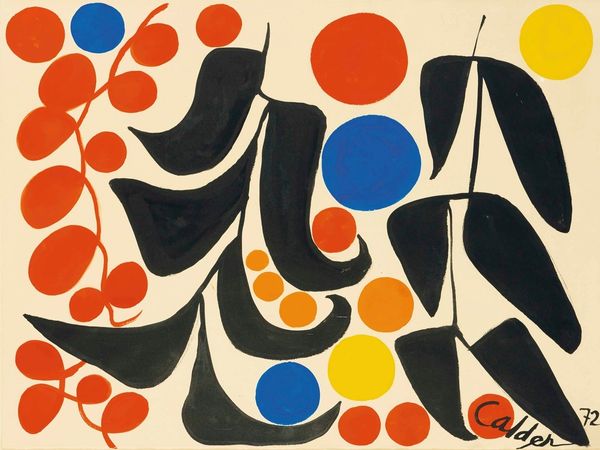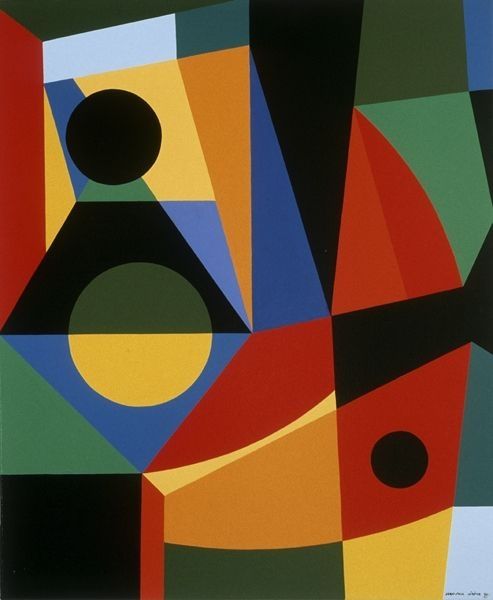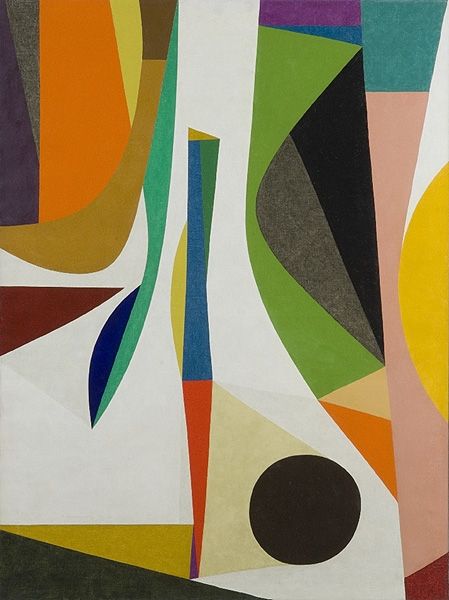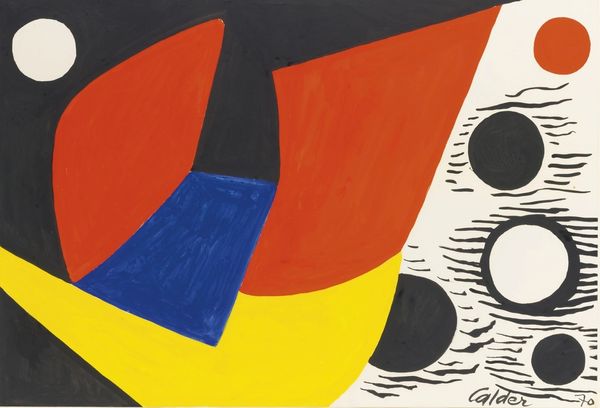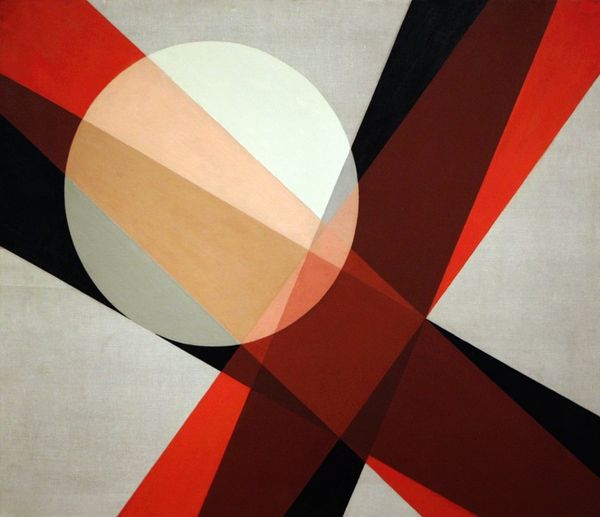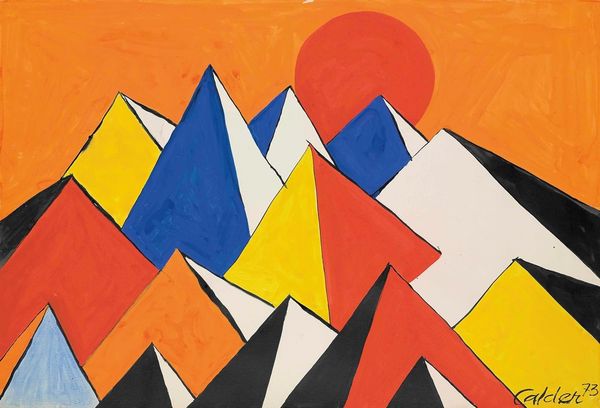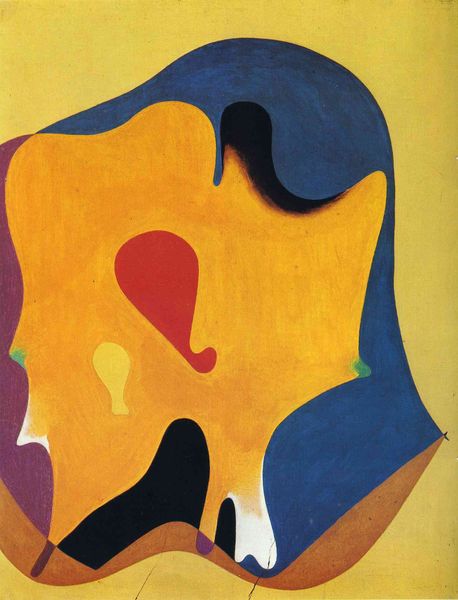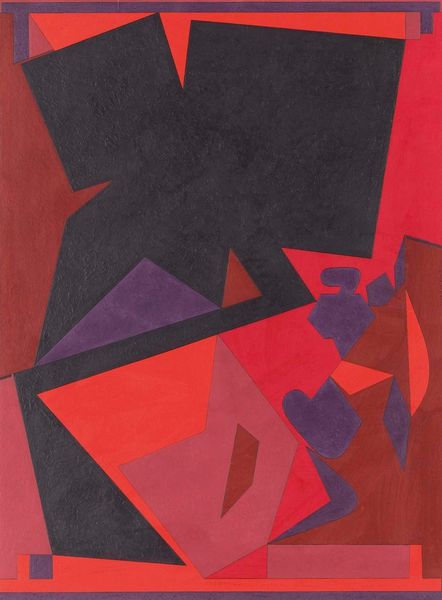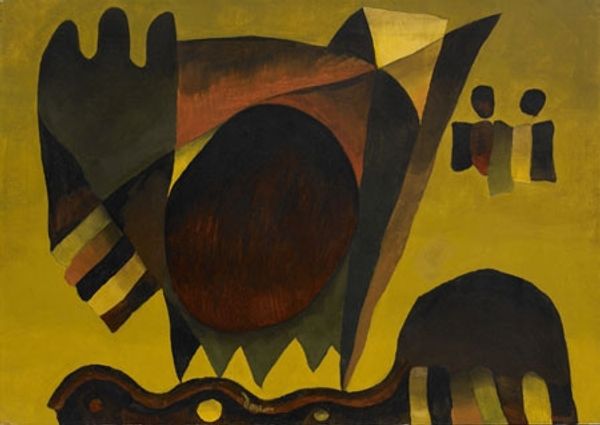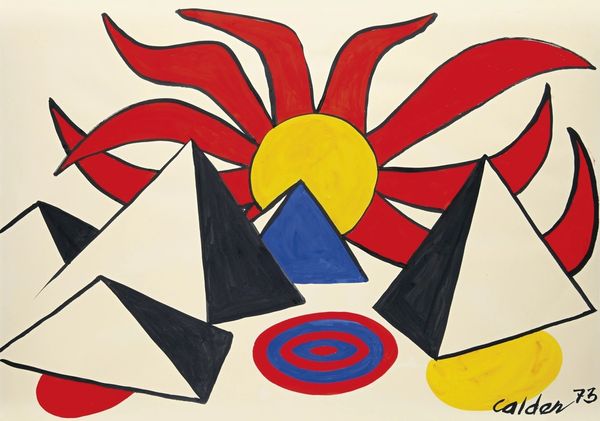
painting, acrylic-paint
#
abstract-expressionism
#
painting
#
op art
#
landscape
#
pop art
#
acrylic-paint
#
geometric
#
abstraction
#
pop-art
#
modernism
#
hard-edge-painting
Copyright: Karl Benjamin,Fair Use
Editor: This is Karl Benjamin’s "Yellow Landscape," created in 1953 using acrylic paint. It strikes me as an unconventional landscape – very flat, very geometric. What do you see in this piece? Curator: Well, immediately I’m drawn to the sociopolitical context of post-war America. The hard edges and bold colors could be seen as a reaction against the more fluid, expressive styles that preceded it. Perhaps Benjamin is using this flattened perspective to critique traditional representations of nature and the idealized landscapes of the past. The sharp angles and distinct color blocks push against notions of natural harmony. Do you see how the title itself, "Yellow Landscape," becomes almost ironic given its blatant artificiality? Editor: I do now. It’s almost like he’s forcing us to reconsider what a landscape even *is*. Curator: Exactly! And think about the use of yellow specifically. Yellow often signifies optimism, but here, juxtaposed with darker shades and stark geometric forms, it feels almost… clinical. I see this painting in conversation with debates around suburbanization and the taming of nature. Editor: That’s a fascinating connection I hadn’t considered. It really pushes you to consider the tension between our idea of “nature” and the way we’re shaping the world around us. So is it about control? Curator: Partly, perhaps. It might reflect anxieties around that control, and the simplification, even the erasure, of the natural world under modern development. It poses uncomfortable questions about the choices we make in altering the landscapes we inhabit. Do you think that adds new resonance when we view the painting today? Editor: Definitely. I'm looking at it completely differently now. The painting seemed cheerful at first, but now it has an edge. Curator: And hopefully, by extension, allows us to recognize the complexities behind what looks like even the simplest of landscapes around us. Editor: It's amazing how much context changes the viewing experience. I’ll remember to ask questions beyond the surface when I'm looking at other artworks, too.
Comments
No comments
Be the first to comment and join the conversation on the ultimate creative platform.

